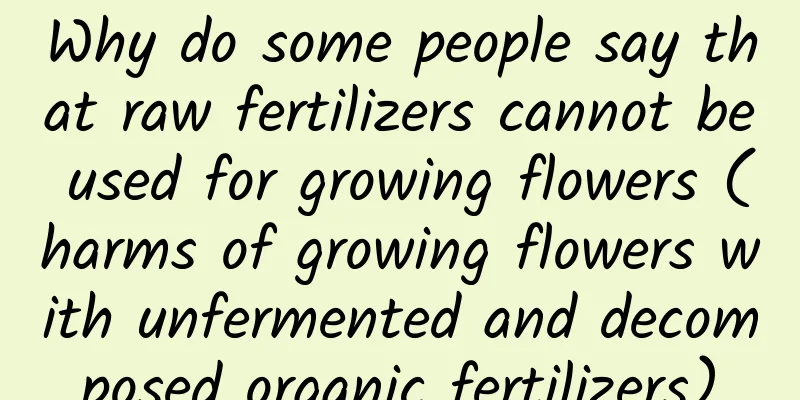Which month is best for sowing winter vegetables?

|
Amaranth , also known as winter amaranth or water chestnut, is a plant belonging to the Malvaceae family of the Malvaceae order. This vegetable can be cooked into soup or stir-fried. It is not only nutritious but also has certain medicinal effects. Winter vegetables prefer cool and humid climatic conditions. They are sensitive to high and extremely low temperatures and will wither during frost. Their most suitable growing temperature range is 15 to 20 degrees Celsius. Let’s learn below which month is best for sowing winter vegetables? Which month is best for sowing winter vegetables? Winter vegetables are best grown in mild climates, and are sensitive to both high and low temperatures. The ideal growth temperature for this plant is approximately between 15 and 20 degrees Celsius, so spring and autumn are the best time to plant it. The climatic conditions in these two seasons are conducive to the sowing and growth of winter vegetables. Normally, spring sowing is chosen between February and March each year, while autumn sowing is mostly carried out between September and November. This timing helps ensure that winter vegetables can grow successfully under suitable climatic conditions. Winter vegetable planting technology 1. Land preparation and fertilization Flat-bed planting is usually adopted. Especially for winter vegetables that need to harvest tender shoots multiple times, it is necessary to ensure sufficient base fertilizer is applied. The recommended furrow width is 1 to 1.3 meters to facilitate harvesting operations. Since winter vegetables have a high demand for fertilizer , human and animal manure should be used as seed fertilizer immediately after sowing. 2. Sowing method Winter vegetables can be sown by direct seeding or seedling raising. The seed usage per mu is approximately between 1 and 1.5 kg, and the sowing method can be broadcast or hole sowing. Broadcasting requires more seeds, while hole sowing requires less. When sowing in holes, keep the spacing between rows and plants at about 25 cm, and sow 4 to 5 seeds in each hole. About 250 grams of seeds are needed per acre for hole sowing, 500 grams are needed for broadcasting, and only 25 grams of seeds are needed per acre for seedling cultivation. 3. Transplanting The density of transplanting varies depending on the purpose of harvesting. If the main purpose is to harvest seedlings, you can plant them densely, with each plant 15 cm apart; if the purpose is to harvest young shoots multiple times, a spacing of 25 cm is appropriate. 4. Field management Intertillage, weeding and thinning. During the growth period of winter vegetables, tillage and weeding should be carried out in time to avoid weeds competing for resources. For broadcast sowing, thinning should be carried out twice when 4 to 5 true leaves grow, and the seedling spacing should be kept at about 16 cm; for hole sowing, thinning should be carried out according to the standard of 2 to 3 plants per clump. Top dressing and irrigation. For winter vegetables that need to harvest tender shoots multiple times, during the peak growth period, top dressing and irrigation should be carried out after each harvest to replenish the nutrients lost due to harvesting. Urea is mainly used for top dressing, and top dressing and irrigation are carried out after each harvest. 5. Harvest For the purpose of harvesting seedlings, they can be harvested together with thinning out about 50 days after sowing. If you want to eat the tender shoots, you can start harvesting the upper leaf tips when the plant is about 18 cm tall. When harvesting in spring, 1 to 2 nodes should be left close to the ground to avoid leaving too many nodes which would lead to nutrient dispersion and affect the quality of the tender leaf tips. In other seasons, 4 to 5 nodes can be left for harvesting. Since winter vegetables grow rapidly, they can be harvested every 5 to 7 days during the growing season. In general, when growing winter vegetables, you need to choose a place with good drainage, loose and fertile soil. In order to avoid continuous cropping problems, it is recommended to plant again every three years. In the Yangtze River Basin, it is not advisable to sow winter vegetables too early in spring to avoid frost damage. Likewise, planting should not be done too late, as high temperatures may result in poor growth.
|
<<: How to take care of newly bought phlox
>>: How to care for newly bought calla lilies
Recommend
Can I water the Christmas cactus when it is blooming?
1. Is it possible to water? In fact, you can wate...
These 10 kinds of succulents become more fragrant the longer they are exposed to the sun, and you will remember them for a lifetime if you smell them once!
Lotus The lotus has a candy-like scent that is cl...
How many years does the plum tree bear fruit?
Introduction to Planting Plum Trees Plum trees ha...
How to trim gray lily
1. Growth period The growth rate of gray lily is ...
Why does the jade tree not bloom?
1. Change the soil 1. Reason: Jade plant has cert...
When is the best time to sow sesame?
Sesame , as an oil-rich crop, is favored in many ...
How often should you water your lemon tree?
How often should you water your lemon tree? The f...
Snow Swallow Tree Planting Conditions Where to Grow
Snow Swallow Tree Planting Conditions Snow martin...
Environmental conditions and characteristics of water chestnut growth
Environmental conditions and requirements for wat...
How to grow Angel's Tears succulent beautifully
Angel's Tears Succulent Growing Conditions It...
Why do we need to repot flowers every year?
1. Reasons When the plant is in the initial seedl...
When to plant cosmos
1. Sowing time The best time to sow cosmos is fro...
How to make peppers sprout quickly
Pepper germination environment Pepper is an annua...
How to grow cosmos in summer
Why does peacock grass grow poorly in summer? In ...
Key points of planting time and method of plum beans
Planting time of plum beans The planting of beans...









